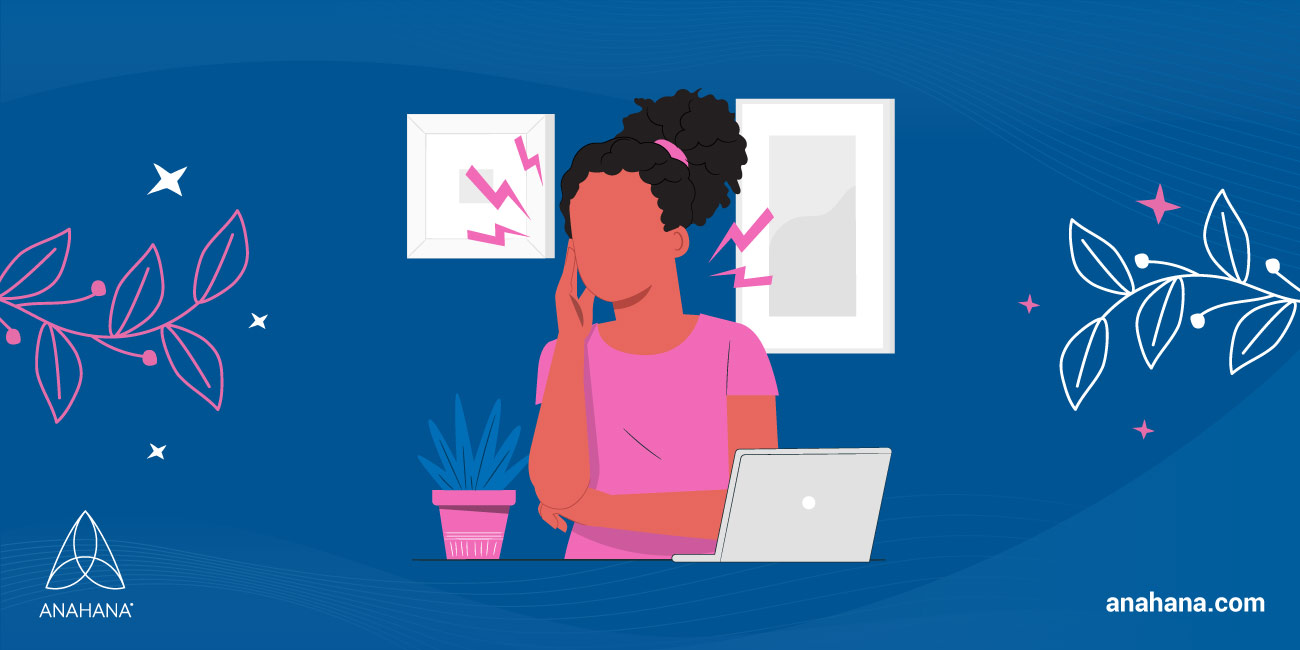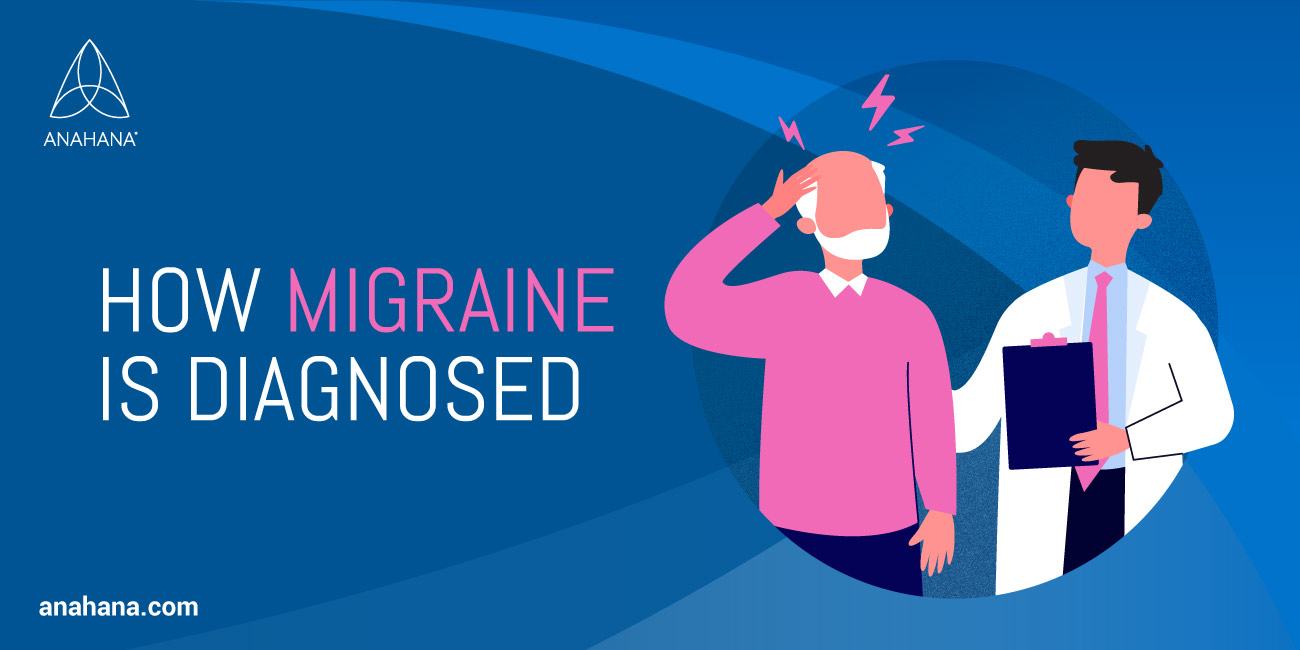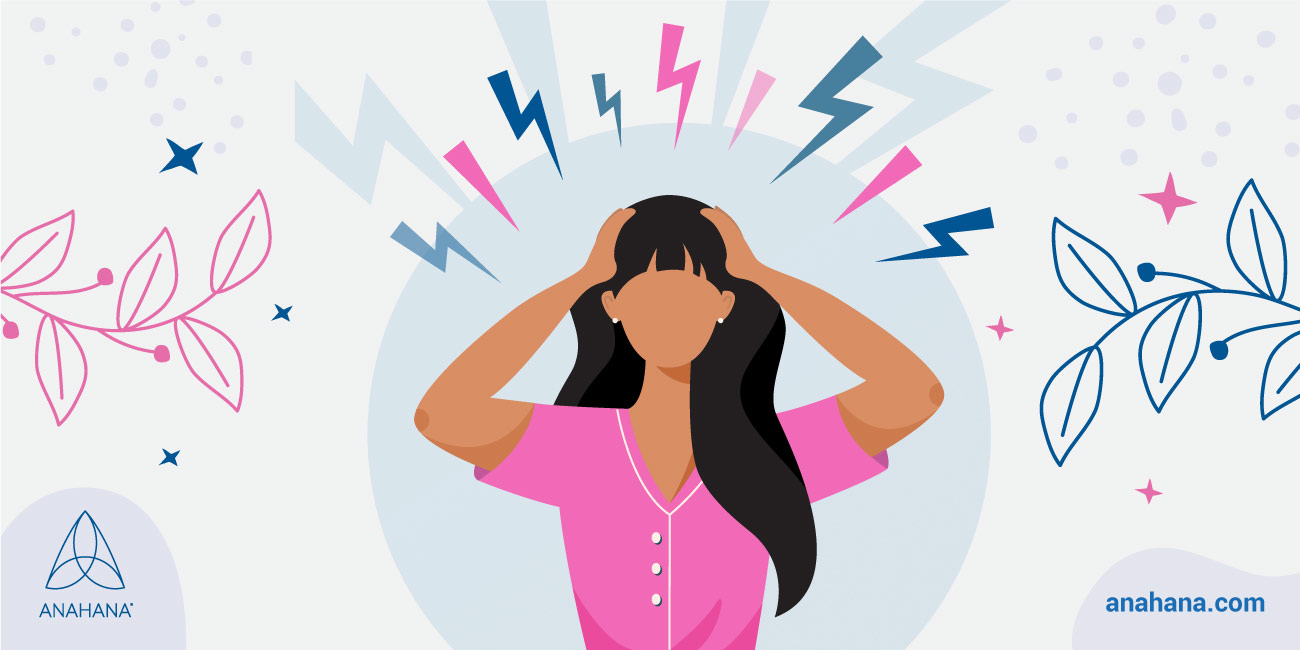
Table of Contents
According to the American Migraine Foundation, a migraine is the seventh most disabling disorder among all diseases. An estimated 10% of individuals worldwide experience migraines.
Key Takeaways
- Definition: Migraines are severe head pain with throbbing, often accompanied by nausea and sensitivity to light and sound.
- Migraine Disorder: Involves various phases and types, including episodic, chronic, vestibular, abdominal, and retinal migraines.
- Risk Factors: Age (20-50), gender (more common in women), and genetics influence migraines.
- Causes: Linked to abnormal brain activity affecting nerve signals and blood vessels.
- Treatment and Prevention: Medications, lifestyle changes, stress management, and pediatric migraine prevention techniques.
- Symptoms: Includes migraine headache pain, nausea, vomiting, and sensitivity to light and sound.
What is a migraine?
Migraine is one of many headache disorders that can cause severe throbbing pain or a pulsing sensation on one or both sides of the head. The International Headache Society defines a migraine by the number of attacks and pain frequency (at least five migraine attacks lasting between 4-72 hours when untreated).
Common symptoms associated with migraine headaches include vomiting, nausea, and increased sensitivity to light and sound. Other symptoms include speech difficulties, auras, food cravings, or a lack of appetite. Individuals who experience migraines with auras may have auras that present as flashing lights before or after the migraine. A migraine with aura is also known as classic migraine, where there are warning signs before the migraine occurs.
The more common migraine is a migraine without an aura. Some individuals also experience migraine pain in the neck, where it can be mistaken for a muscle or arthritis spasm, or in the face, where it can be mistaken for a sinus headache. The migraine headaches may also be combined with sinus-like symptoms, including facial pressure, watery eyes, and nasal congestion. In some patients, the migraine can be severe and long-lasting, affecting everyday activities.
Migraine risk factors
Common migraine risk factors include age, sex, and medical history. While a migraine can occur at any point in life, it most often affects individuals aged 20-50. The headaches may peak in an individual’s 30s, and their severity lessens as they grow older. Gender also plays a role, with women thrice more likely to experience migraines than men. Genes contribute to the prevalence of migraine; an individual is much more likely to experience migraine headaches if one or both parents have migraine.
Causes of migraine
While the exact causes why migraines occur are unknown, environmental, lifestyle, and genetic factors might play a role. A migraine is thought to be due to abnormal brain activity that temporarily affects chemicals, nerve signals, and blood vessels in the brain. Research suggests that overactive nerve cells send signals to the trigeminal nerve, which causes the body to release calcitonin gene-related peptides (C.G.R.P.) and serotonin. C.G.R.P. causes swelling in the brain's blood vessels, which results in migraine inflammation and pain. The headache pain on one side of the head can move to the other side of the head and affect the entire head.
Episodic and chronic migraine
An episodic migraine means having a migraine less than fifteen days each month. A migraine that occurs for three or more consecutive months or more than fifteen days per month is chronic. Episodic migraines can progress into chronic migraine due to triggers such as caffeine overconsumption or excessive use of medications, including N.S.A.I.D.S., opioids, and barbiturates. The pain gets worse when individuals are sensitive to light and sound. Chronic migraine symptoms include double vision, slurred speech, loss of balance, and vertigo.
Types of migraine
How a migraine manifests in individuals depends on the type of migraine they experience. For example, vestibular migraines are common in individuals with a medical history of motion sickness. The common symptoms of a vestibular migraine include nausea and vomiting with or without a headache.
A common type of migraine affecting children is abdominal migraine, which causes nausea and vomiting. Abdominal migraine is characterized by stomach pain and loss of appetite in children. It can progress into a classic migraine headache with time. Retinal migraine is another type of migraine that occurs due to the constriction of blood vessels in the eye causing the lowering of blood flow to the eye. An ocular or retinal migraine involves repeated bouts of temporary or partial blindness or diminished vision in one eye.
Phases of migraine
 Prodrome Phase
Prodrome Phase
Migraine attacks involve more than just the timeframe when someone has a headache. For most individuals, the attacks occur in three phases. Approximately 60% of individuals experience the prodrome phase symptoms at the beginning of a migraine attack. These subtle signs include mood changes, lack of appetite, food cravings, constipation, diarrhea, increased urination, and frequent yawning. However, some individuals do not recognize these signs as indicators of a migraine attack.
Aura Phase
One-third of individuals affected by migraine may experience an aura before or during a migraine attack. Aura refers to reversible and temporary visual disturbances and neurologic symptoms that stem from the central nervous system. The symptoms usually begin gradually, over a 5-to-20-minute period, and last less than an hour. A migraine with aura may present as flashes of light, black dots, wavy lines, hallucinations, or tunnel vision. Some individuals might experience a complete loss of vision, numbness, or a tingling sensation on one side of the body.
Migraines without an aura are the most common type of migraine, which occur without any warning signs. Another type is a migraine aura without headaches, also known as silent migraine, where the aura and migraine symptoms occur without migraine headaches. Silent migraine, also known as acephalgic migraine, can produce debilitating symptoms with visual disturbances, vision loss, alterations in color perception, and sensitivity to light, sound, and smell.
During the attack stage, migraine headaches begin as a dull ache and grow into throbbing or pulsing pain, which occurs on one side of the head. About 80% of individuals experience nausea and vomiting along with migraine headaches. Individuals may also be pale, clammy, or lightheaded. Most migraine headaches last about four hours, but severe migraines can go on for more than three days.
Migraine Headache Phase
During the headache phase, the pain can move from one side of the head to the other, possibly affecting the front of an individual’s head. It can also feel like it is affecting an individual’s entire head. Symptoms that are typical in this phase include sensitivity to light and noises, nausea, and vomiting.
Postdrome Phase
Finally, after individuals experience migraine headaches, the postdrome stage can last for up to a day with symptoms like fatigue, body aches, muscle pain/weakness, dizziness, trouble concentrating, and sensitivity to light and sound.
Differences between Child and Adult Migraine
According to the American Migraine Foundation, some critical differences exist in how children experience migraine attacks. Some differences include less frequent migraine attacks and experiencing more bilateral pain compared to unilateral, shorter-in-duration migraine attacks. The bilateral pain occurs across the forehead in contrast to unilateral on one side of the head.
Common Migraine Triggers
Endogenous or exogenous elements that increase the likelihood of a migraine attack in a short time are known as migraine triggers. Some triggers include stress and foods and drinks, such as food additives, aged cheese, alcohol, and monosodium glutamate. Hormonal changes are also common migraine triggers for women. Many women notice that migraine attacks occur due to fluctuations in estrogen levels during pregnancy or their menopausal or menstrual cycles. A migraine that occurs three days following the menstrual cycle or two days before the start of the period is called menstrual migraine.
Symptoms might include migraines without aura, throbbing pain on one side of the head, nausea, vomiting, and increased sensitivity to light. A menstrual migraine results from a drop in estrogen levels and can be triggered by stress, caffeine, or skipping meals. Hormonal and birth control medications like contraceptives can also worsen migraine headaches.
Other migraine triggers include skipping meals, caffeine consumption, dehydration, and sudden changes in weather or sensory stimuli. Some weather changes associated with migraine headaches include high humidity, excessive heat, storms, shifts in barometric pressure, and thunderstorms.
While weather changes cannot be controlled, individuals must do what is favorable for their migraine. Furthermore, strong odors such as smoke, perfume, and paint thinners trigger migraines in some individuals. Identifying and understanding an individual’s triggers is crucial to prevent migraines.
Not all common triggers are present in all individuals, and individuals with migraines experience triggers differently. Tracking triggers can be more complex and needs careful consideration. It is important for individuals affected by migraine to identify and understand their triggers.
How are Migraines Diagnosed?
 There are no standard tests to diagnose migraines. However, some ways the doctor can diagnose migraines include using the symptoms an individual describes, or the doctor can ask the individual about their family history. In addition, doctors can perform physical examinations to determine the cause of the headaches. The doctor can also order brain-imaging tests, such as a C.A.T. scan and M.R.I. of the brain, or blood tests. They may also ask individuals to maintain a migraine journal and identify factors that might trigger their migraines.
There are no standard tests to diagnose migraines. However, some ways the doctor can diagnose migraines include using the symptoms an individual describes, or the doctor can ask the individual about their family history. In addition, doctors can perform physical examinations to determine the cause of the headaches. The doctor can also order brain-imaging tests, such as a C.A.T. scan and M.R.I. of the brain, or blood tests. They may also ask individuals to maintain a migraine journal and identify factors that might trigger their migraines.
Migraine Treatments
Common migraine treatment is preventive medication aimed at reducing the severity and frequency of migraine attacks. Doctors use various types of medications to prevent migraines. Preventive treatment includes blood pressure medicines initially developed for high blood pressure. These preventive medicines include angiotensin receptor blockers, beta-blockers, calcium channel blockers, antidepressants such as tricyclic antidepressants, serotonin-norepinephrine and antiseizure medications, and valproic acids.
Healthcare providers recommend that individuals experiencing migraines take one or more preventive medications for 2-3 months to evaluate the effectiveness unless they experience adverse effects. Preventative or abortive medications focus on relieving the headache pain and stopping the pain from becoming severe.
More recent and expensive medications for migraine headaches include antibodies to calcitonin gene-related peptide or their receptors and antagonists. C.G.R.P. inhibitors block a gene-related peptide that increases during a migraine attack which can help prevent migraine headaches. Preventive treatment for chronic migraines includes topiramate and botulinum toxin type A. Other medical devices that might help treat migraines include a non-invasive vagus nerve stimulation, external trigeminal nerve stimulator, and transcranial magnetic stimulation.
Managing frequent migraines can involve physical treatments like massage, acupressure, acupuncture, chiropractic, and craniosacral therapy, which help ease headache symptoms. However, it is critical to consult the doctor before trying alternative treatments. To determine the treatment of choice, it is critical that an individual describes their headache symptoms, including the severity and frequency of the symptoms.
For women whose migraine symptoms seem to be associated with their menstrual cycle and are experiencing menstrual-related migraine, hormone therapy can assist with other symptoms.
Complications from Painkillers
Individuals taking pain medication too often may experience a severe medication overuse headache. The risk of a medication overuse headache is the highest if an individual takes a combination of caffeine, acetaminophen, and aspirin. Taking ibuprofen or aspirin for more than 14 days and triptans for more than nine days a month can also trigger medication overuse headaches. Medication overuse headaches occur when the medication is no longer effective in relieving migraine pain and causes headaches. The cycle continues as one uses more medicine.
Some migraine medications may also narrow the blood vessels; therefore, individuals at risk of heart disease or heart attack must consult a healthcare professional before use. Alternatively, pregnant women and patients with other comorbid conditions must consult their healthcare provider before using and evaluating for adverse effects.
How to Prevent Migraines?
 Migraine prevention involves using the S.E.E.D.S. natural method. An individual can prevent migraines using the five effective steps of S.E.E.D.S., which stands for sleep hygiene, eating regular and healthy meals, exercising regularly, keeping a migraine diary, and stress management.
Migraine prevention involves using the S.E.E.D.S. natural method. An individual can prevent migraines using the five effective steps of S.E.E.D.S., which stands for sleep hygiene, eating regular and healthy meals, exercising regularly, keeping a migraine diary, and stress management.
Sleep
Lack of sleep or irregular sleep can trigger migraines or migraine attacks. According to the American Migraine Foundation, individuals with migraines are up to 8 times more likely to have sleep issues than others. Some ways to improve an individual’s sleep hygiene include following a standard and regular sleep routine, keeping the room cool and dark, avoiding using electronics in bedrooms, and doing bedtime relaxation techniques.
Regular Meals
Eating regular and healthy meals can make a big difference, especially for individuals with hunger triggers. Food comparatively high in proteins and low in carbohydrates is generally preferable for individuals experiencing migraine to avoid fluctuations in blood sugar. The major challenge is to assess whether certain foods are migraine or headache triggers, as this can considerably vary between individuals.
Therefore, it is critical to recognize what diet or foods trigger one’s headache pain. However, some common strategies that can be adopted include taking meals at least three times a day, stopping or limiting caffeine intake, and staying hydrated by drinking 7-8 glasses of water daily.
Exercise
Moderate and regular exercise can be effective in preventing migraines. One must be careful, as strenuous exercise and physical activity can aggravate an attack. Some benefits of exercise include improved overall health and better sleep. Recommended exercises for individuals with migraine include regular aerobic exercise for at least 30 minutes 3 times a week and approximately 30 minutes of cardio a few times a week.
Choose an exercise and activity of choice; start by slowly setting goals for the duration and frequency of exercise and gradually increasing exercise frequency and duration. This gradual process helps an individual refrain from strenuous exercise that can trigger migraine.
Migraine Diary
Keeping a headache/migraine diary is a handy tool for managing triggers, diagnosis, the efficacy of medications, and the effectiveness of current treatment, enabling an individual to understand the disorder better. For example, one can use several apps apart from a diary to track their migraine/headache.
Some advantages of a diary include helping the doctor diagnose the migraine, showing the pattern to attack, helping individuals recognize the warning signs and triggers, and assessing acute or preventive medication. Always keep the diary simple and record basic information, which might be beneficial to managing and preventing migraines.
Stress Management
Stress can intensify migraine symptoms. Therefore, stress management must be essential to natural migraine prevention and control plans. Establish a daily routine incorporating relaxation times. Relaxation periods should consist of relaxation strategies. Some of these include taking a slow, deep breath, soft relaxing sounds, and light, or focusing on a soothing image or scene.
Other recommended strategies to help manage stress include cognitive-behavioral therapy, biofeedback, breathing techniques, gratitude, guided meditation and mindfulness, and positive mantras.
Prognosis of Migraine
In some individuals, migraine headaches are a risk factor for stroke. Individuals with a higher risk for stroke include people who smoke, women who have migraines with aura or take birth control pills, and individuals who eat unhealthy foods resulting in high blood pressure or cholesterol.
Professional Help
Call 911 or go to an emergency department when an individual experiences the worst headache of their life, neurological symptoms that have not occurred before, such as balance, vision or speech issues, tingling sensations, paralysis, weakness, seizures, or if the headache occurs after a head injury or comes on suddenly. To learn more about migraine, refer to resources from the national headache foundation, the American headache society, and the migraine research foundation.
Resources
What Is Migraine? | Headache | JAMA
https://www.ingentaconnect.com/content/wk/wco/2022/00000035/00000003/art00016
Migraine: Symptoms, Causes, Diagnosis, Treatment, and Prevention
Migraine - Symptoms and causes - Mayo Clinic
Migraine: Symptoms, Causes, Treatment, Triggers, and More
Disclaimer
The contents of this article are provided for informational purposes only and are not intended to substitute for professional medical advice, diagnosis, or treatment. It is always recommended to consult with a qualified healthcare provider before making any health-related changes or if you have any questions or concerns about your health. Anahana is not liable for any errors, omissions, or consequences that may occur from using the information provided.

By: Anahana
The Anahana team of researchers, writers, topic experts, and computer scientists come together worldwide to create educational and practical wellbeing articles, courses, and technology. Experienced professionals in mental and physical health, meditation, yoga, pilates, and many other fields collaborate to make complex topics easy to understand.
